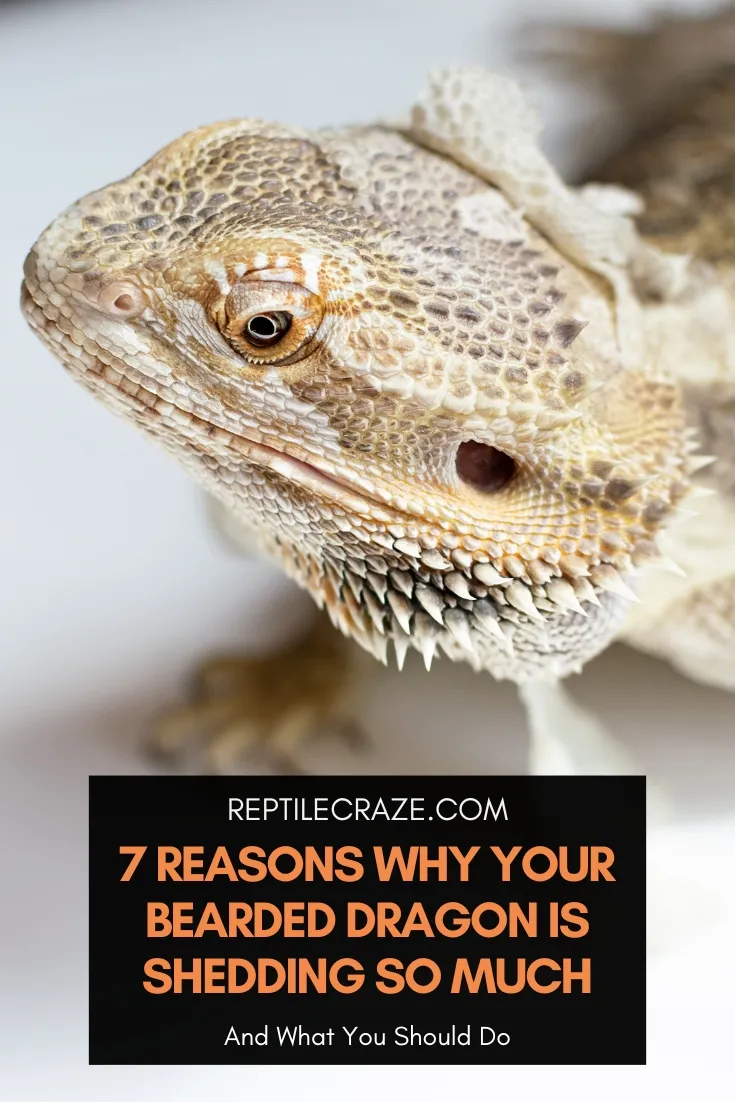
Nobody likes dry, flaky skin. And nobody likes to constantly see dry, peeling skin on their bearded dragon. Bearded dragons shed their skin periodically, but are they really supposed to shed their skin ALL the time?
Bearded dragons shed their skin in cycles that decrease in frequency as they get older. What looks like excess shedding is really a shedding problem, a situation where the old skin fails to fall off. Causes of shedding problems include nutritional, environmental, health, and stress-related factors.
A bearded dragon that is shedding all the time is not a healthy bearded dragon. This article will discuss the potential causes of excess shedding in bearded dragons, as well as how it can be treated.
Table of Contents
Causes of Excess Shedding In Bearded Dragons
Yes, excess shedding in bearded dragons is bad. It’s a sign that something isn’t quite right with your dragon, and should be addressed as soon as possible.
Excess shedding can cause discomfort to the dragon, which can make them more prone to illnesses or injury if not treated. Additionally, excess shedding can cause skin irritation, leading to infections.

Shedding problems often result in bands of retained skin that constrict the tips of toes and tail which, if left untreated, will cause those constricted areas to die and fall off.
The scientific name for shedding problems in reptiles is dysecdysis. If your bearded dragon seems to be shedding all the time, you likely have a case of dysecdysis on your hands.
Here are some common reasons why this may happen:
1. Malnutrition
Nutritional deficiencies can be a major factor in shedding problems. Inadequate vitamins, minerals, and other essential nutrients can lead to poor skin quality, which leads to abnormal shedding.
Poor diets are the most common cause of bearded dragon malnutrition. These reptiles are omnivores, meaning they need to eat both plants and animal (insect) protein.
Tip: Read our bearded dragon care guide for information on a bearded dragon’s nutritional needs.
Intestinal parasites can also cause malnutrition. The parasites can interfere with the animal’s ability to use the nutrients that it eats. They can also cause diarrhea and weight loss, which also leads to malnutrition.
2. External Parasites
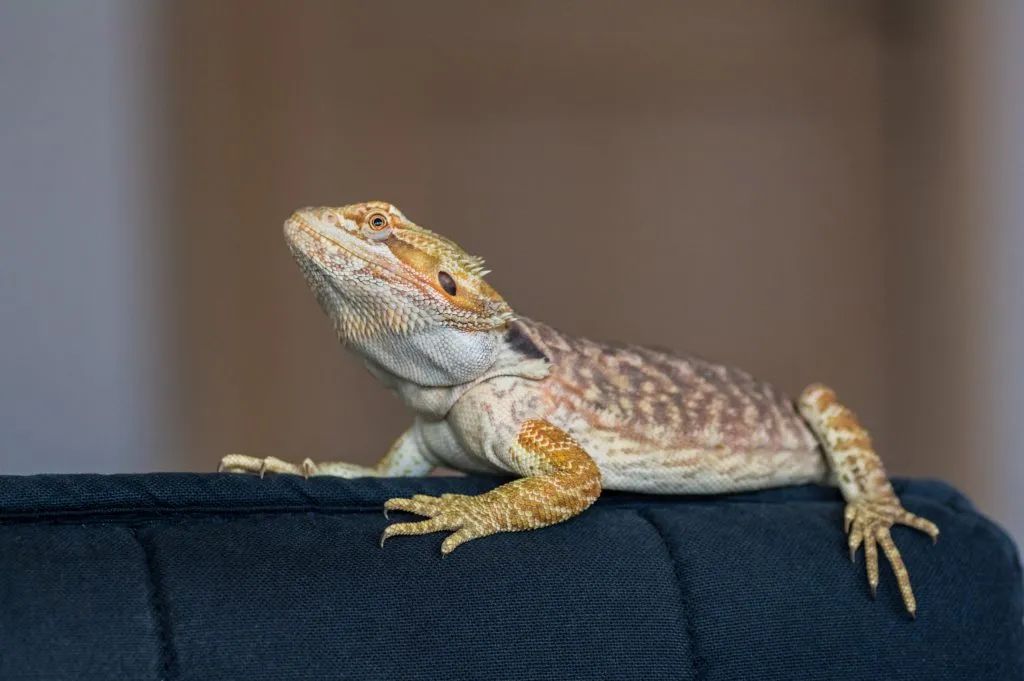
External parasites such as mites can cause excess shedding in bearded dragons. They are very small and will be seen as tiny black or red specks on the dragon’s skin.
These parasites feed on the skin, which can cause itching and irritation. An itchy bearded dragon will excessively scratch and rub against things, which can cause shedding problems. The mites can also carry diseases that can make your pet seriously ill.
3. Stress
Stress is a major factor when it comes to excess shedding in bearded dragons. Handling them too often, keeping more than one in the same
Stressed bearded dragons will often lose their appetite and become less inactive. The resulting malnutrition and changes in normal behaviors can eventually lead to shedding problems.
4. Thermal Burns And Other Injuries
Thermal burns (from contact with heating lamps or overheated basking rocks) and other injuries can cause shedding problems in bearded dragons.
Any injury to the skin interferes with the normal process of shedding in the injured area and can lead to retained skin or other shedding problems.
5. Dehydration
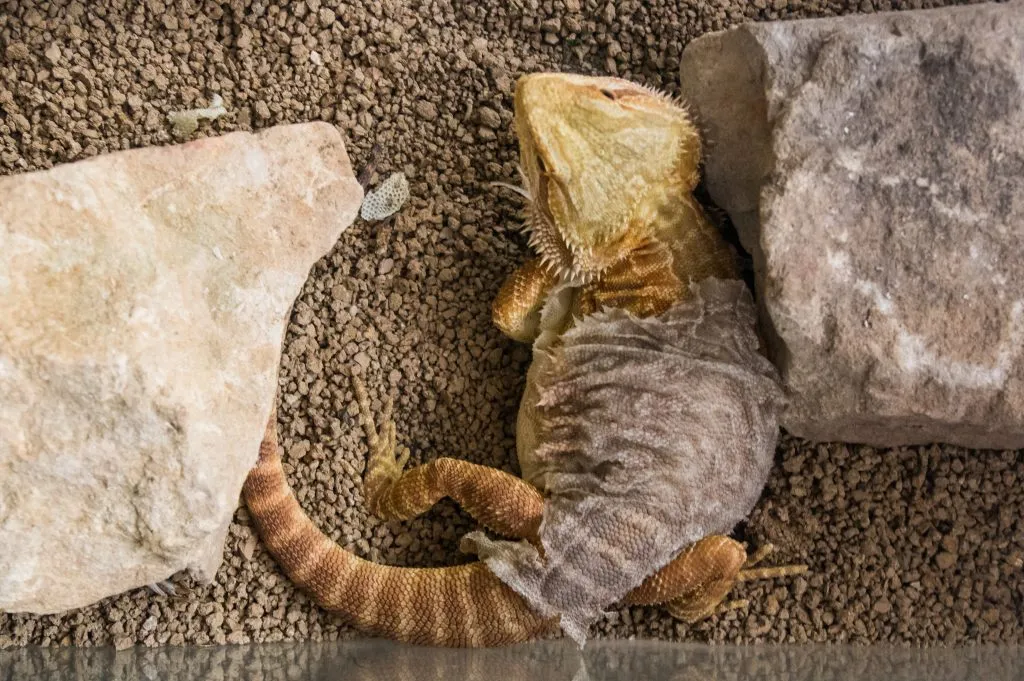
Normal skin shedding relies on water. As the new skin forms, a thin layer of moisture forms between the new skin and the old skin, separating the two. This separation allows the old skin to be easily shed.
If your bearded dragon is unable to drink enough water to meet its needs, then the water layer between the old and new skin cannot form properly. This leads to retained skin.
6. Low Humidity
Your bearded dragon needs water on the outside, as well as the inside, to be able to shed its skin properly. Low humidity in the
7. Lack Of Hide Areas
Besides having the proper humidity levels in their everyday environment, bearded dragons also need a place of high humidity where they can go to “soak” their skin to help it loosen.
This is usually achieved by providing them with a moist hide area within their habitat, such as a hollow log partially filled with damp sphagnum moss.
If there is no moist hide area in the
8. You Have A Young Beardie
Bearded dragons normally shed their skin in cycles, beginning with the head and ending with the tail. These cycles can last anywhere from a few days to a couple of weeks, depending on the age of your dragon.
When shedding of old skin takes the entire time between shedding cycles, this makes it seem like the bearded dragon is shedding all the time.
Hatchlings grow fast and will shed as often as weekly. These little guys will seem like they are always shedding. This is normal in most cases.
Juvenile bearded dragons shed less often than hatchlings but more than adults. They will shed about every other week up until about 12 months of age, and then once a month up to 18 months of age.
Fully grown bearded dragons shed only once or twice a year. Once they get to this age, they most definitely should not appear to be shedding constantly.
How To Recognize Shedding Problems In Bearded Dragons
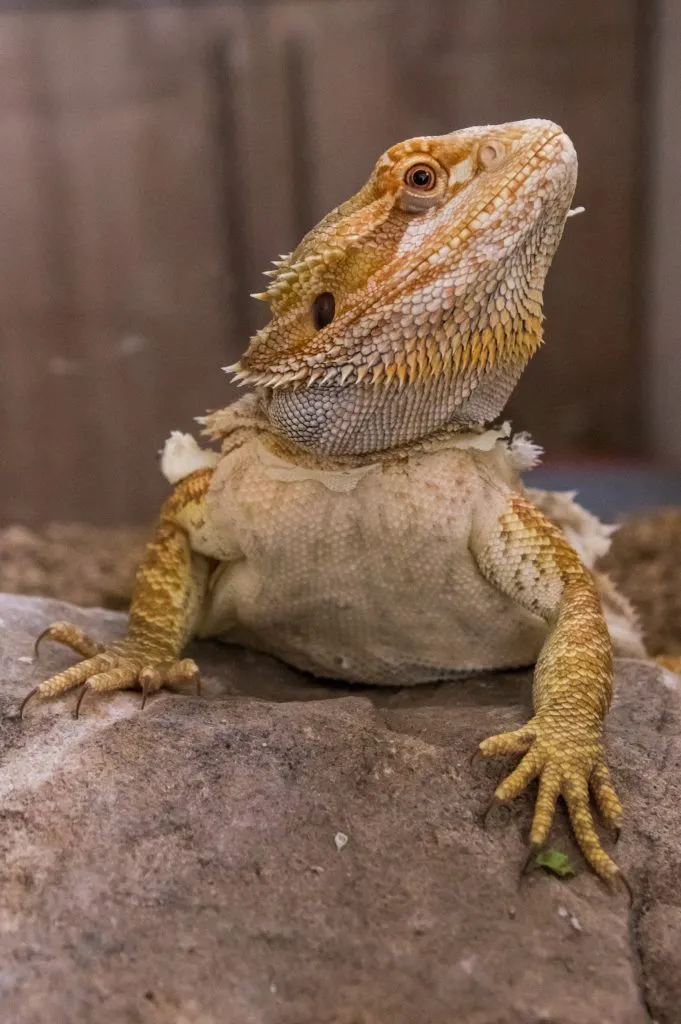
A bearded dragon that is shedding its skin normally will look ragged and tattered until it is done. So how can you tell if what you are seeing is normal or abnormal?
We recommended taking pictures of your bearded dragon daily and comparing the day-to-day progress. If several days go by without any noticeable difference, then there is probably a shedding problem.
If you suspect that your pet does have a shedding problem, closely inspect it to identify problem areas.
Stuck skin, by itself, does not cause any particular issue for the bearded dragon other than making it itchy and uncomfortable. However, it can indicate a problem area, such as a burn or an injury.
Retained skin does cause a problem when it forms constrictive bands around toes, tail tips, and spikes and can cause amputation if not corrected. Look for bands of tissue resembling rubber bands wrapped around these areas.
How To Treat Excess Skin Shedding In Bearded Dragons
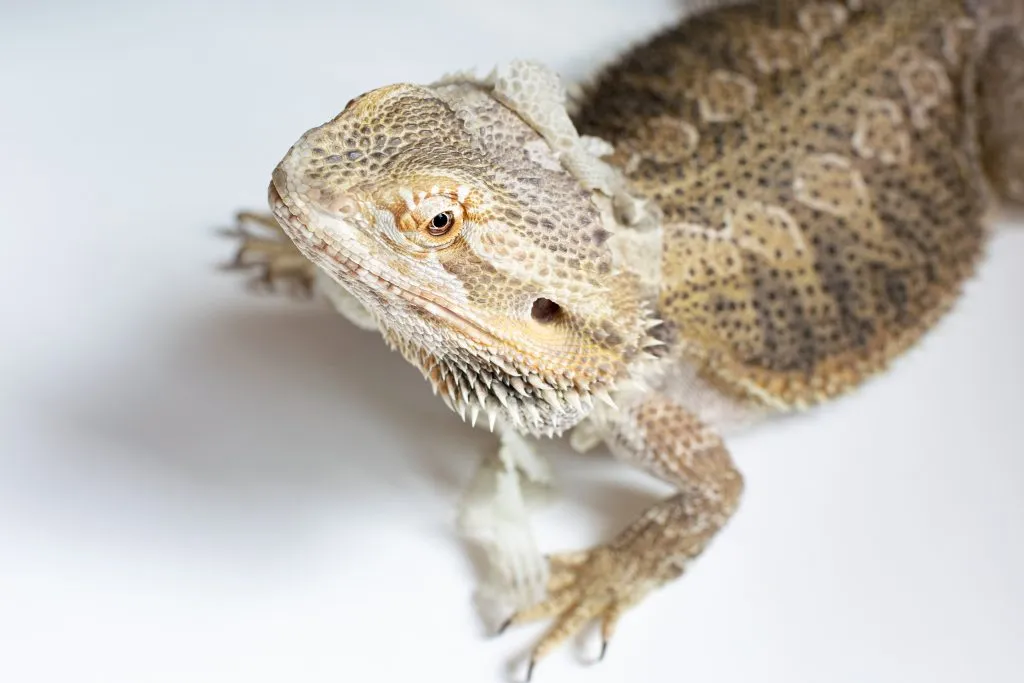
Treat The Immediate Problem
The goal here is to loosen and remove the old skin while at the same time hydrating the new skin underneath. Once the old skin is gone, and the new skin is healthy, the normal shedding cycle can resume.
The first thing to remember is: do not forcefully pull the old skin off! Doing so can cause damage to the new skin underneath and possibly even tear it.
Letting them get the skin off themselves is the safest method. Make sure that they have rough objects in their
If this doesn’t help after a couple of days, then your direct intervention may be needed.
To safely remove the old skin, it first needs to be softened. This can be accomplished by giving your bearded dragon a 20-minute soak in warm, shallow water. Do not leave them unsupervised while they soak.
After they have soaked, gently rub the skin with a toothbrush in circular motions. Pay special attention to the skin around their toes, tail, and spikes.
Again, don’t force it. If the old skin does not gently pully away after this, stop and try again in a couple of days.
You can also use this reptile shedding aid. These products are mixed in with their bath water to help the process along.
Watch the video below for a demonstration of how to safely help your bearded dragon shed its old skin.
Treat The Underlying Cause Of Shedding Problems
Once you’ve helped your bearded dragon shed its old skin, it’s time to fix the root of the problem.
Make sure that the management of your bearded dragon and its habitat is perfect by providing the following:
- Humidity: Daytime humidity of 30-40%.
- Moist hide: Hide furniture such as a hollow log filled with most substrates like sphagnum moss.
- Adequate
food and water: Refer to our bearded dragon care guide for specific dietary requirements. - Stress-free environment: Stress results in poor health, which in turn results in shedding problems. Identify any sources of stress and remove them.
- Treat internal and external parasites: Mites can be treated with this special spray; bearded dragons with internal parasites should be taken to a veterinarian for examination and treatment.
- Habitat safety: Make sure there is nothing in their habitat that could injure them. Make sure that lights have protective coverings and basking rocks are working properly.
Conclusion
Excess shedding in your bearded dragon could indicate an underlying problem.
A healthy reptile is less likely to have shedding problems, so head off future problems by making sure they have the proper environment, diet, and care at all times.
If you spot excess skin, intervene gently to help your dragon remove it safely. If the problem persists, then consult a veterinarian as soon as possible.
With the proper care and attention, you can ensure that your bearded dragon remains healthy and happy for a long, long time.
Hope this helps. 🙂
- Enchi Ball Python: A Unique and Stunning Morph of Python regius - March 27, 2025
- Emerald Tree Monitor: The Enigmatic Green Guardian of the Rainforest - March 26, 2025
- The Egyptian Cobra (Naja haje): A Fascinating Serpent - March 25, 2025
